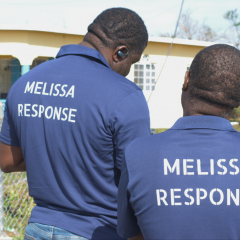
Co-creating Solutions with Local Communities: Lessons from Flying Labs
November 20th, 2025
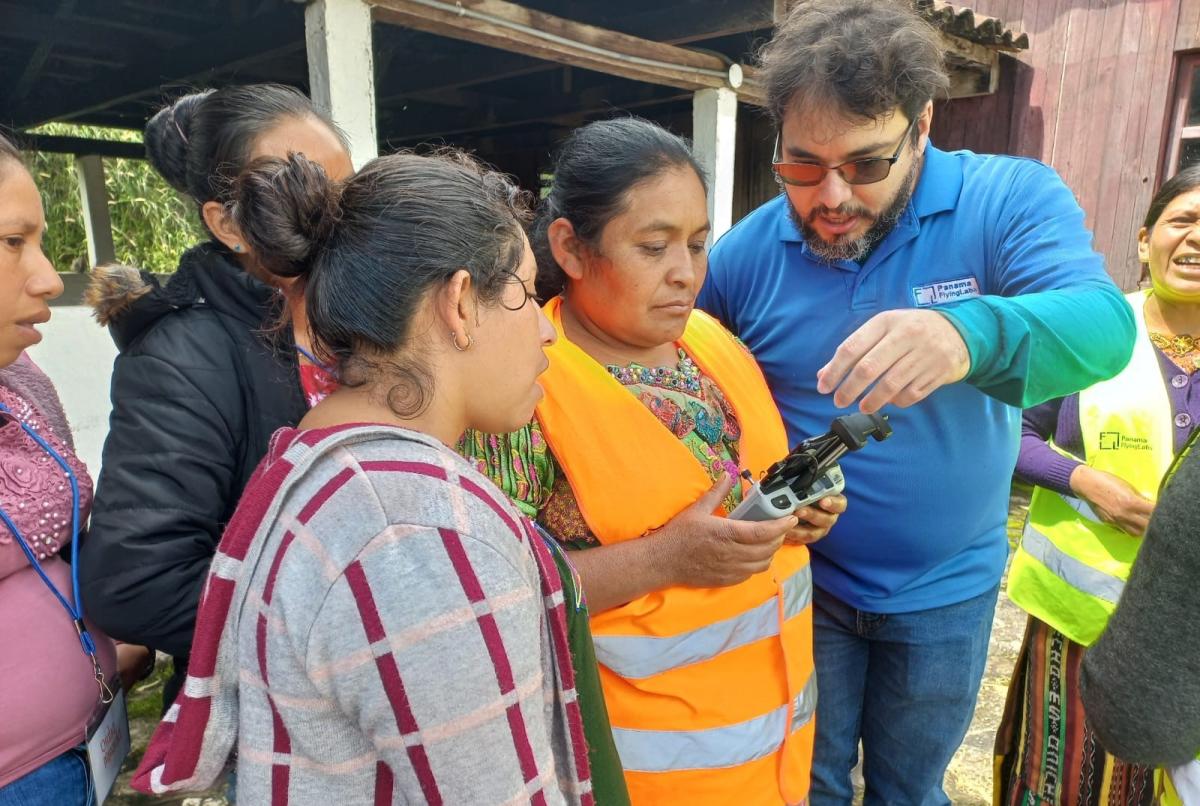
Co-creating solutions involving drones, data and AI with local communities requires much more than technology. It is about relationships, trust, and ensuring that the people who live with challenges are the ones shaping the responses. Through their projects — and especially those developed under WeRobotics’ Turning Data Into Action (TDIA) methodology — Flying Labs place local stakeholders at the center of solution design and implementation. This way they turn drone data into sustainable, locally owned action and change.
We launched the TDIA methodology five years ago and have been improving it over time thanks to close collaboration with Flying Labs. Using a microgrant approach, WeRobotics extends to Flying Labs critical financial, technical, strategic, and communication support that allows Flying Labs to turn a small project into far-reaching impact in their local communities as well as a cascade of opportunities.
Here are a few lessons we’ve taken from the past five years of carrying out TDIA projects with Flying Labs.
1. Prioritize the people, not the technology.
Flying Labs work in their own communities and are therefore deeply familiar with the unique contexts and challenges of their environments. This makes them well-placed to connect meaningfully with the relevant local stakeholders, be it policymakers, local government officials, community leaders, educational institutions, or other private and nonprofit organizations advancing change in the sector. They know who these stakeholders are and how to invite them into discussions that will be beneficial to all.
As such, at the beginning of every TDIA project, Flying Labs create stakeholder maps, which help them identify diverse stakeholders and lay out plans for connecting with them. In this role, Flying Labs function as ecosystem builders in their communities, the main job of which is to create spaces where different expertises and experiences can come together and enrich the collective perspective of an issue.
It is the very reason the Network was created: to elevate and center the power of local expertise.
This intentional stakeholder engagement is a key success factor for successful projects. The TDIA methodology encourages Flying Labs to prioritize connecting on a human level first, before even introducing the technology. And the time invested into stakeholder engagement by far exceeds the time invested in collecting, processing, and analyzing the drone data.
They organise in-person meetings with the stakeholders, maintain active communication with them throughout, and host public awareness activities that invite community participation. In fact, Flying Labs undertaking projects supported by our TDIA methodology often assign specific team members the task of managing proactive stakeholder communication.
The goal is not to check a box but to invest the necessary time to build relationships and trust.
Importantly, part of building trust lies in making the technology accessible. When engaging with stakeholders, Flying Labs showcase their proposed solutions through live demonstrations and real-life examples from across the Network. This accessibility is important — because it’s not the high-tech tools themselves that solve problems, but the people who use them. What truly matters is that stakeholders understand the technology, trust it enough to try it, know what it can and cannot do, and, in doing so, develop a sense of local ownership of the proposed solution.
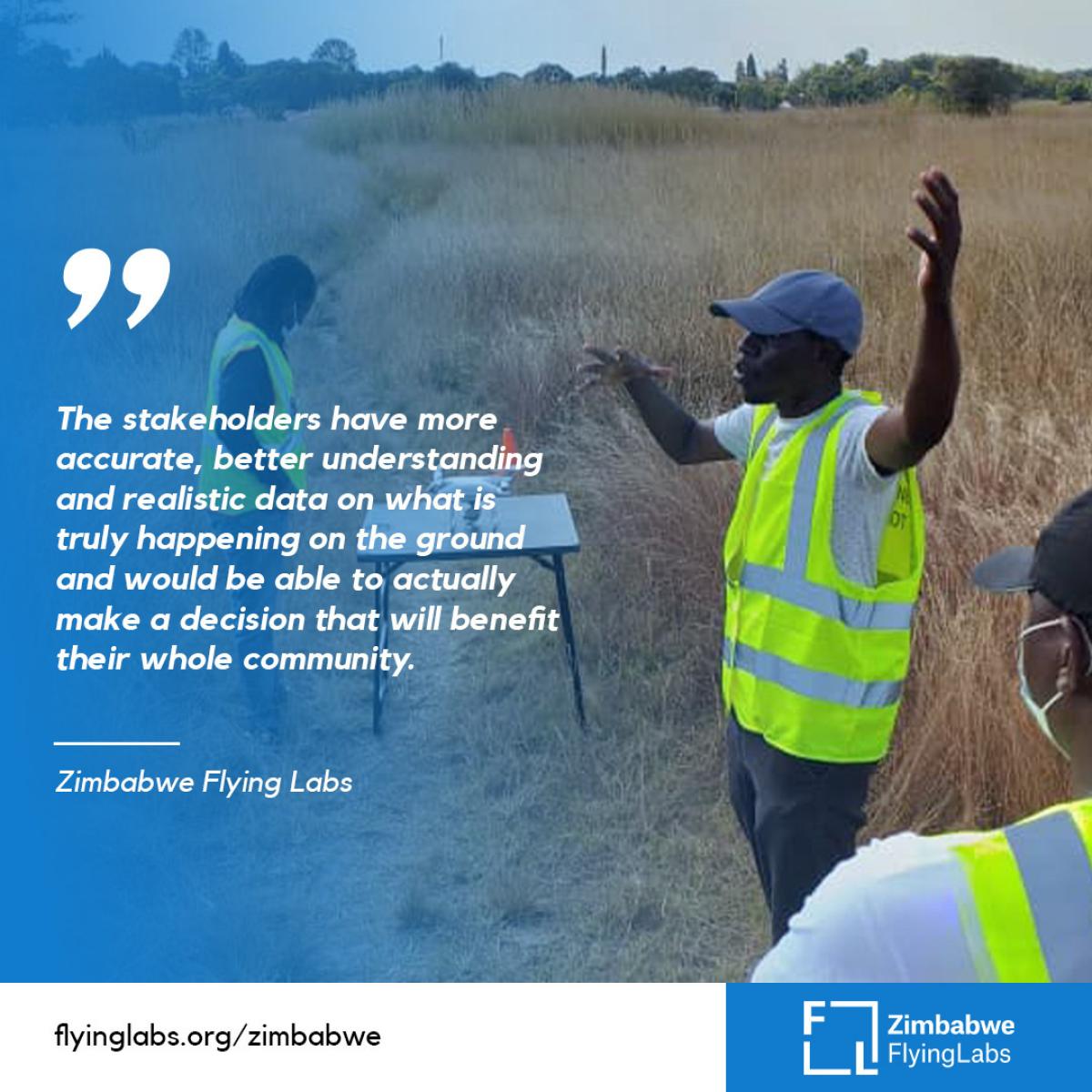

2. Engage stakeholders early and continuously to find alignment
The TDIA methodology ensures alignment between data solutions and community needs through four steps:
- Stakeholder engagement – involving local stakeholders, including the local community and local authorities.
- Drone data collection and analysis – gathering geospatial data for specific challenges.
- Data understanding – building stakeholders’ skills and confidence in using data.
- Enabling action – empowering stakeholders to apply data-driven solutions.
Three of these four steps focus on direct collaboration with stakeholders. It is a clear reminder that genuine buy-in can make or break a project. Cultivating this buy-in begins with involving people from the very start and seeking their input before any implementation begins. Listening is essential. And it is important to maintain communication throughout the project, not just at isolated points. This demonstrates genuine investment rather than a one-off transaction.
During stakeholder engagement for projects using the methodology, Flying Labs define project scope, timelines, costs, regulatory requirements, and expected outputs, and present these details for discussion and refinement with stakeholders. Only after these conversations are complete do they formalize agreements and proceed to execution.
Even during execution, stakeholders remain actively involved, with Flying Labs maintaining regular communication and offering updates. It’s easy to assume that relationship-building must be “completed” before a project begins, but in reality, trust often deepens through ongoing collaboration. Keeping stakeholders engaged throughout the project allows relationship-building to continue in the background, strengthening connections and laying the groundwork for even greater collaboration in the future.
Change that includes technological tools can only last when there is clarity about what actually matters: what will make a difference, what is most beneficial to the community, and how context shapes those needs. A project that succeeds in one place may falter in another, often because of assumptions made about what a community needs. The difference lies in whether the implementers rush to deliver a ready-made solution or take the time to listen, understand, and align with the people who know their context best.


3. Share knowledge widely.
Knowledge sharing is at the heart of the Flying Labs Network. As part of the requirements for being part of the Network, Flying Labs document and share their experiences and learnings through blog posts, project use cases, webinars, and impact stories, as well as through active participation in regional calls and sector expertise hubs. This culture of sharing in order to learn together strengthens the Network and supports South-to-South learning.
Within projects financed through TDIA microgrants, documenting and storytelling are a key deliverable, with WeRobotics offering direct support to the Flying Labs. They share project and impact stories in multiple formats, including videos, ArcGIS Story Maps, and written narratives.
Not only do these stories celebrate their project achievements but they also attract opportunities for replication with new stakeholders and communities. Additionally, they create practical resources for other Flying Labs, who can then replicate or adapt the projects in their own communities.
Each project then concludes with an evaluation process that includes gathering feedback from both stakeholders and team members. These insights are collected and shared, and the process of reflection ensures that learnings are not lost but multiplied across the Network.
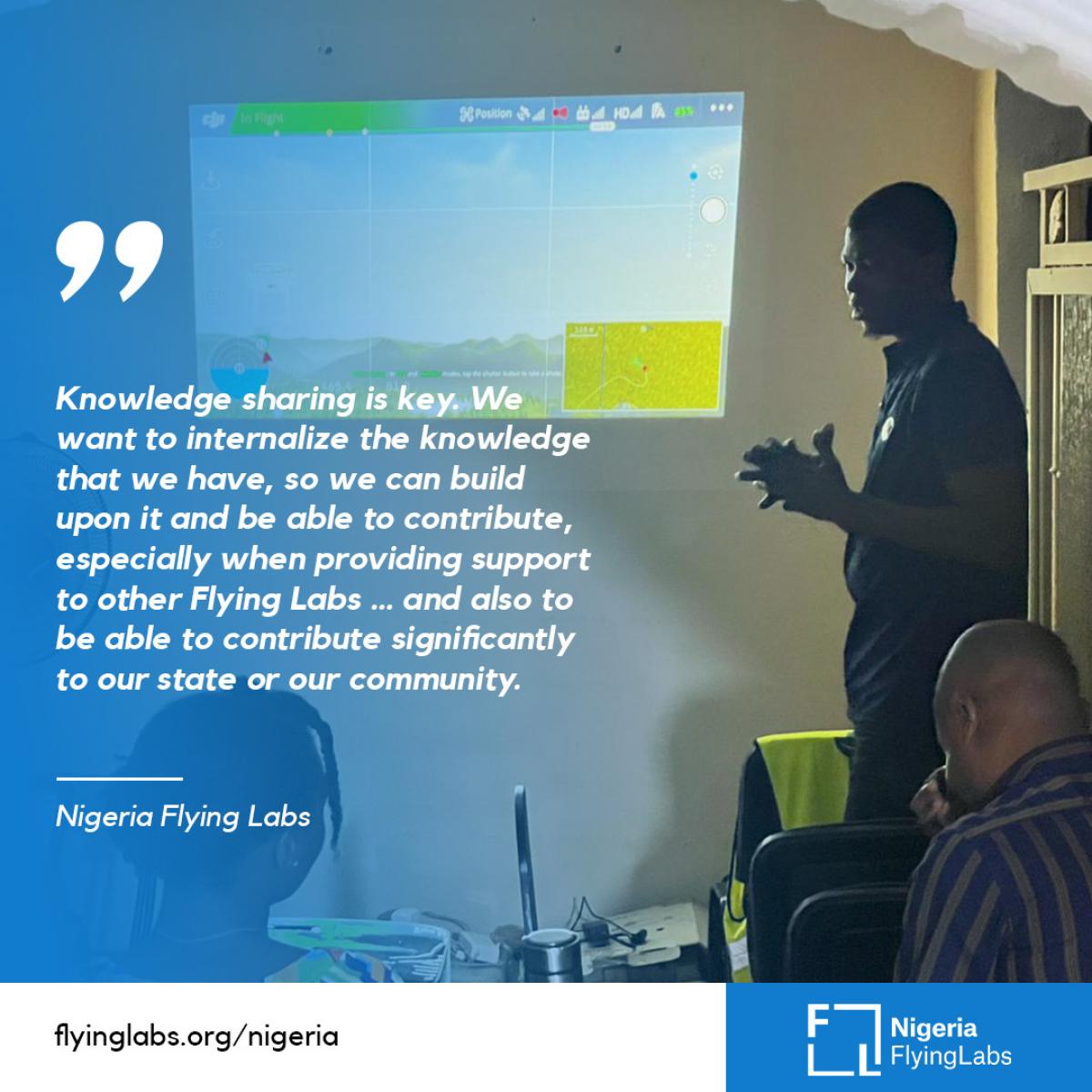
4. Cross the finish line together.
At WeRobotics and the Flying Labs Network, co-creation is our primary approach. From the very start of each project, we invest significant effort in bringing together local stakeholders — no matter the sector or the challenge in need of addressing — to ensure their voices shape the process. The Network is built on the power of diversity and relationships, with the recognition that lasting impact comes from working together.
For us, then, it is imperative that solutions are co-created with local stakeholders, who bring diverse perspectives from their communities. While this requires significant time upfront, it ultimately leads to a far more effective and efficient use of both technology and resources.
You can see this commitment to co-creation in the choice of drones as the main tool utilized by Flying Labs — they have a unique way of bringing people together.
Most obviously, the tactile experience of flying a drone draws curiosity and interest from local community members in a way that software cannot. Then, compared to satellite data or geospatial data produced through traditional photogrammetry, drones allow room for data to be collected and owned collectively. Drone data is produced locally and can be made available to a wide range of people, including communities at the grassroots level. Stakeholders and decision-makers are invited to participate in the full data journey, from deciding what data to acquire to data processing, all the way to analysis of the final data products and the creation of actionable insights.
In TDIA projects, outputs defined with stakeholders at the start are shared with them at the end, along with discussions on how to apply the findings for the benefit of local communities. With this inclusiveness, data can then be trusted at the local level and thus used to make informed decisions.
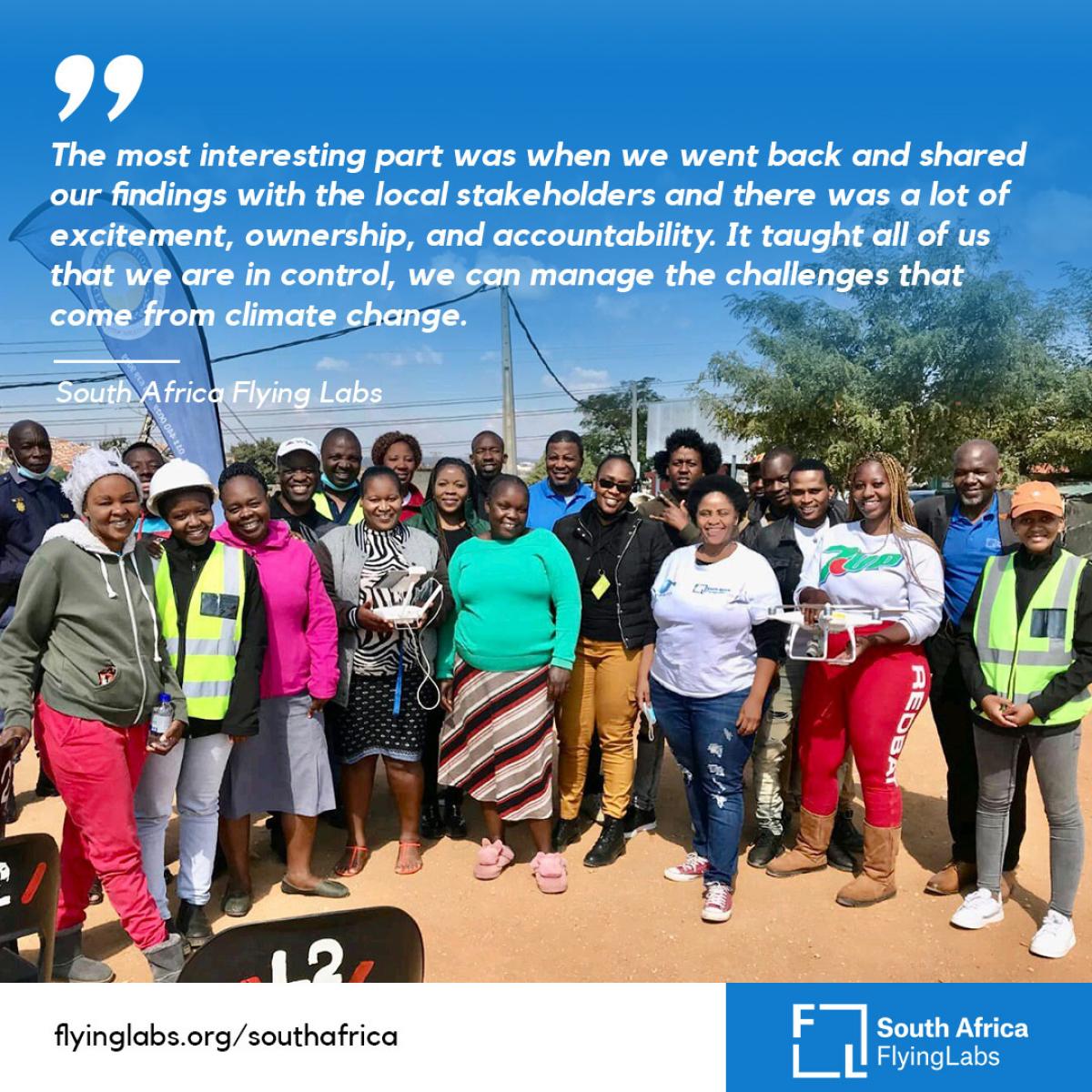

The TDIA methodology rose out of a need to answer a question that came up after years of observing Flying Labs projects: why do some projects fail to translate data into action? We have found that the answer lies in alignment — or the lack of it — between technology experts and decision-makers. The value of TDIA, therefore, lies in its recognition that effective stakeholder engagement is not a side task but the foundation of sustainable solution design and implementation.
TDIA emphasizes connecting with local stakeholders and communities, aligning with their needs, capturing learnings and sharing them both locally and globally through storytelling, and ultimately co-creating solutions alongside those stakeholders. Guided by the methodology, Flying Labs show how technology can serve the progress of a people. In our experience, it proves not just an effective way of working in the long term, but a deeply human one as well.
Recent Articles

